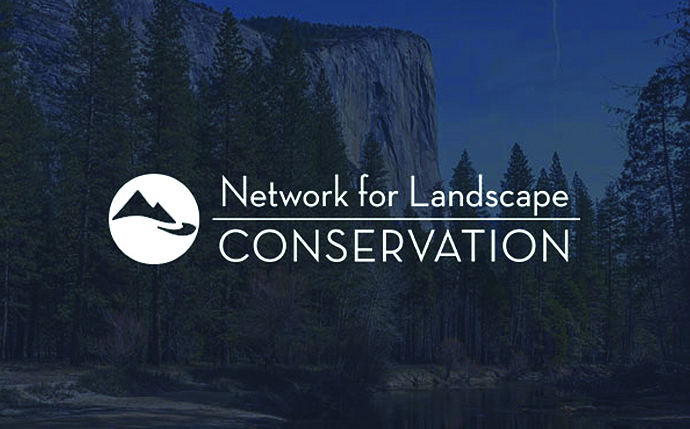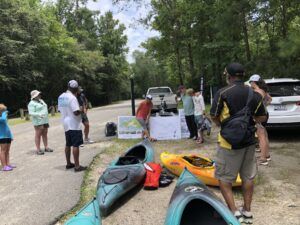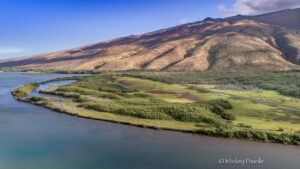
A coming of age moment for collaborative, from-the-bottom-up landscape conservation and stewardship
More than ten years ago, the Network for Landscape Conservation (NLC) was created by a group of conservationists whose decades of experience working on the ground across North America led them to believe that diverse interests could and should plan cooperatively together at the landscape scale to conserve and steward the multiple values of America’s natural resources. The founders of the NLC recognized that “landscape scale” could vary from place to place based on differences in geography and history—but that river valleys, mountain ranges, estuaries, grasslands and the like could provide from-the-bottom-up building blocks for 21st Century conservation and stewardship. Such an approach could integrate the concerns and desires of people with the need to protect habitat for fish and wildlife in a time of climate change. The NLC’s subsequent surveys have revealed that there are already hundreds of places in this country where farmers and ranchers, conservationists and loggers, outdoor recreation groups and scientists are cooperating to chart the future of the places they love and value.

In South Carolina, the Black River Initiative is a community-inspired vision to establish a new recreational water trail connecting a growing network of public lands, along 70 miles of this beloved river. Here, partners discuss the Initiative prior to a field trip. The Initiative is a 2021 Catalyst Fund grant recipient. Photo credit: Credit Erin Donmoyer, courtesy of the Black River Initiative
All this framed an optimistic start to the NLC’s vision: “An enduring network of diverse and inclusive community-grounded partnerships throughout the United States and cross-border regions that conserve the resilient landscapes that sustain us all.” However, like almost everything else in our complex world, making steady progress toward creating the enabling conditions for a functional network of landscape collaboratives proved to be challenging. But that is changing. Over the last 24 months, there have been a remarkable series of breakthrough events that suggest the landscape perspective has emerged as a critical, unifying framework for guiding conservation and stewardship if we are to successfully address interwoven biodiversity, climate, and environmental injustice problems.
A few examples that evidence the extent of this shift include:
- The Sentinel Landscape Program, which brings together the Departments of Defense, Agriculture, and Interior to conserve land around military bases, continues to grow in funding and stature, delivering nearly a billion dollars of conservation funding over the last decade. The program experiences strong competition from local interests who want their places to be selected as Sentinel Landscapes; in the last twelve months, four additional Sentinel Landscapes have been designated, bringing the total to 11—with another designation cycle anticipated this Spring.
- The Department of the Interior just announced a Restoration and Resilience Framework which emphasizes “locally led landscape, partner driven restoration” in large landscapes like the Appalachian Mountains, “the Sagebrush Sea” and the Klamath Basin.
- In its updated Comprehensive Plan (2022), the Gulf of Mexico Ecosystem Restoration Council of Federal and Gulf state agencies reaffirmed the importance of a “watershed approach” to restoring the Gulf using Deepwater Horizon Settlement money.
- Thanks to long-standing efforts by Tribes to have their sovereign rights acknowledged, the Departments of Agriculture and the Interior have prioritized advancing Tribal co-management and co-stewardship. In the last two years, USDA and DOI have signed over 20 agreements to honor Tribal sovereignty and improve federal-Tribal coordination to better protect culturally, ecologically, and economically significant landscapes.
- In 2021 the Association of Fish & Wildlife Agencies formed a new task force on landscape conservation with the U.S. Fish & Wildlife Service, recognizing that coordination at the landscape level—across states and between state and federal partners—will be essential to safeguarding the future of America’s fish and wildlife.
- The White House Council on Environment Quality (CEQ) just announced new government guidance on Ecological Connectivity and Corridors which includes “planning at the scale of landscapes, waterscapes or seascapes.”
- Individual states, too, are increasingly recognizing the importance of landscape connectivity within their boundaries—and how it intersects with human well-being. For instance, in 2021, the Florida legislature passed a Florida Wildlife Corridor Act with unanimous support and provided funding for advancing the Florida Wildlife Corridor. Florida is not alone: this summary highlights seven states that advanced legislation in 2022 in support of wildlife crossings and habitat connectivity.
- The National Fish and Wildlife Foundation’s America the Beautiful Challenge seeks to support “diverse and comprehensive landscape-level projects,” with $116 million currently available in the 2023 grant cycle. Funded through the 2021 Bipartisan Infrastructure Law, the Challenge aims to advance the locally led and nationally scaled vision and 30×30 goal of the Administration’s America the Beautiful Initiative.

On the Island of Moloka’i, one of the eight main islands of Hawai’i, Indigenous partners are coming together to consider how to integrate both cultural uses and habitat needs into reimagining the island’s wetland landscape. The Moloka’i Wetlands Partnership is a 2021 Catalyst Fund grant recipient. Picture Credit: Mickey Pauʻole, courtesy of the Moloka’i Wetlands Partnership
These initiatives and others like them are not just symbolic; they are backed by funding and geared toward equitable and tangible action. The NLC applauds this progress. It is a remarkable vote of confidence in the belief and assertion that landscape collaboratives can bring private landowners, government agencies, conservationists, community residents and tribal representatives together to discuss and act on the critical issues that will determine the character of the places where they live and work.
There is, however, a gap in this progress. Effective landscape collaboration that works authentically with diverse interests is difficult. It requires ongoing staffing, support and facilitation, and while there are now large amounts of money to implement conservation projects, in most parts of the country there is insufficient support for the necessary planning, cooperation, and coordination. For instance, the Network’s own Catalyst Fund is a grant and peer learning program that provides modest collaborative capacity investments to landscape collaboratives at critical points in their development. In the first four years of the Catalyst Fund, we have received more than 520 requests and have awarded 55 grants. The high demand for the Catalyst Fund demonstrates that collaboratives across the country need investments in those processes that allow them to develop a cohesive shared vision for their landscape, watershed, or seascape as a whole, and to develop competitive funding proposals that will enable them to accelerate on-the-ground conservation and stewardship. This is particularly true in rural areas, for Tribes, and for historically underserved communities.

The High Divide Collaborative works to connect partners in a landscape that straddles the Continental Divide along the Idaho-Montana state line. The Collaborative is a 2019 Catalyst Fund grant recipient.
The NLC believes that a small program of competitive grants to landscape partnerships for three years of coordination staffing and peer learning will build the capacity necessary to enable conservation planning, accelerated project development, and expanded implementation. This proposed National Landscape Partnerships Fund would not only advance strategic projects coordinated at the landscape scale, but also build strong, durable relationships among diverse individuals as they create a brighter future for their communities.
Much has been said and written about the divisions in American society, but despite those differences, it now seems entirely possible to, quite literally, find common ground in conserving the landscapes and their fish and wildlife habitat that are so integral to the health of the economy and the quality and character of life in this country. And perhaps working together on the future of our cherished lands can be a bridge to help address our other differences.
